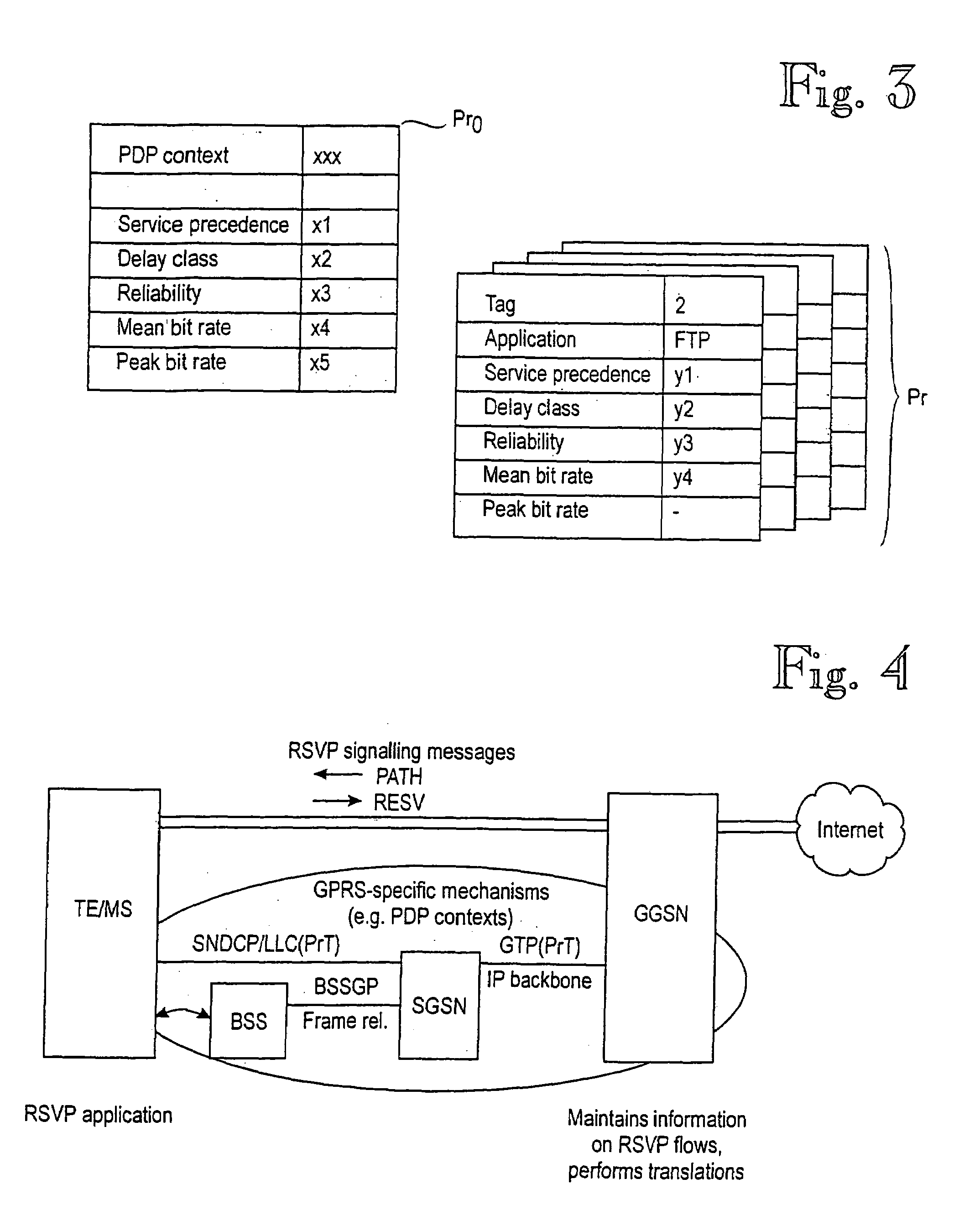Controlling quality of service in a mobile communications system
a mobile communications system and control technology, applied in the field of controlling the quality of service, can solve the problems of inability of gprs network to meet the various qos requirements of internet applications, different qos levels of end-to-end delays, bit rates and numbers of lost, etc., to facilitate dynamic renegotiation
- Summary
- Abstract
- Description
- Claims
- Application Information
AI Technical Summary
Benefits of technology
Problems solved by technology
Method used
Image
Examples
example 1
[0084]Simple Integrated Media Access (SIMA) is a new simple approach presented as an Internet-Draft by K. Kilkki, Nokia Research Center, June 1997. Internet-Drafts are working documents of the Internet Engineering Task Force (IETF), its areas, and working groups. SIMA is used as an example of an Internet QoS scheme because it is capable of providing a uniform service concept for different needs from file transfer applications using TCP / IP protocol without loose delay and packet loss requirements to real-time applications with very strict quality and availability requirements. According to the SIMA concept, each user shall define only two issues before the connection setup: a nominal bit rate (NBR) and the selection between real-time and non-real-time service classes. The NBR may have eight values 0 to 7. Mapping of parameters from SIMA to GPRS and vice versa may be as follows, for example:
[0085]Real-time / non-real-time bit: if this bit indicates real-time require-ments, it is mapped ...
example 2
[0089]Mapping a Type of Service (ToS) octet in the headers of IP PDUs to GPRS attributes. The ToS octet in an IP header is not widely used at the moment. Its original purpose was to include traffic type information and to specify what kind of service is required from the packet delivery. Because the ToS octet is not in common use nowadays, it is possible to redefine the bits in that octet for the purposes of the present invention. A definition of the ToS octet is given in RFC 791 Bits 0 to 2 of ToS give the preference, bits 3 to 5 give the ToS required by the packet (e.g. delay, throughput, and reliability levels requested), and bits 6 to 7 are reserved for future use. RFC 1349 extends the ToS field by one bit (taken from the “reserved for future” bits). Thus, 4 bits can be used to indicate a ToS.
[0090]Mapping between the precedence bits (0 to 2 in ToS) and GPRS service precedence may be as follows:
[0091]
bit values (0 to 2)service precedence value111 and 110001 (highest priority)101...
PUM
 Login to View More
Login to View More Abstract
Description
Claims
Application Information
 Login to View More
Login to View More - R&D
- Intellectual Property
- Life Sciences
- Materials
- Tech Scout
- Unparalleled Data Quality
- Higher Quality Content
- 60% Fewer Hallucinations
Browse by: Latest US Patents, China's latest patents, Technical Efficacy Thesaurus, Application Domain, Technology Topic, Popular Technical Reports.
© 2025 PatSnap. All rights reserved.Legal|Privacy policy|Modern Slavery Act Transparency Statement|Sitemap|About US| Contact US: help@patsnap.com



